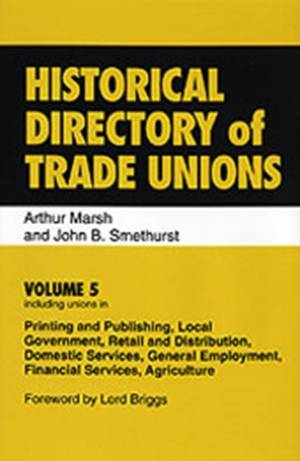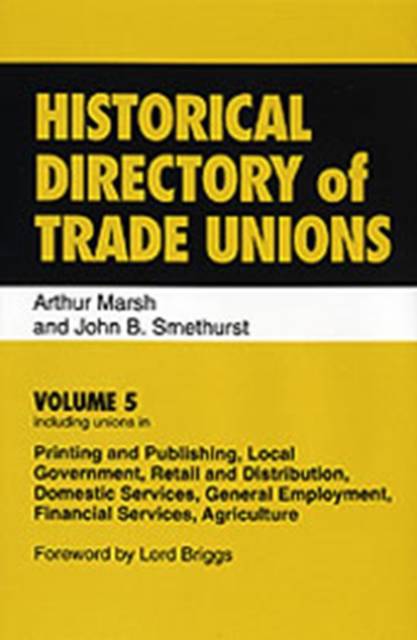
- Afhalen na 1 uur in een winkel met voorraad
- Gratis thuislevering in België vanaf € 30
- Ruim aanbod met 7 miljoen producten
- Afhalen na 1 uur in een winkel met voorraad
- Gratis thuislevering in België vanaf € 30
- Ruim aanbod met 7 miljoen producten
Zoeken
Historical Directory of Trade Unions
Volume 5, Including Unions in Printing and Publishing, Local Government, Retail and Distribution, Domestic Services, General Employment, Financial Services, Agriculture
Arthur Marsh
Hardcover | Engels
€ 162,45
+ 324 punten
Uitvoering
Omschrijving
Despite widespread interest in the trade union movement and its history, it has never been easy to trace the development of individual unions, especially those now defunct, or where name changes or mergers have confused the trail. In this respect the standard histories and industrial studies tend to stimulate curiosity rather than satisfy it. When was a union founded? When did it merge or dissolve itself, or simply disappear? What records survive and where can further details of its history be found? These are the kinds of question the Directory sets out to answer. Each entry is arranged according to a standard plan, as follows: 1. Name of union; 2. Foundation date: Name changes (if any) and relevant dates. Any amalgamation or transfer of engagements. Cessation, winding up or disappearance, with date and reasons where appropriate and available; 3. Characteristics of: membership, leadership, policy, outstanding events, membership (numbers). 4. Sources of information: books, articles, minutes etc; location of documentation.
Specificaties
Betrokkenen
- Auteur(s):
- Uitgeverij:
Inhoud
- Aantal bladzijden:
- 608
- Taal:
- Engels
Eigenschappen
- Productcode (EAN):
- 9780859679909
- Verschijningsdatum:
- 18/12/2006
- Uitvoering:
- Hardcover
- Formaat:
- Genaaid
- Afmetingen:
- 138 mm x 216 mm
- Gewicht:
- 838 g

Alleen bij Standaard Boekhandel
+ 324 punten op je klantenkaart van Standaard Boekhandel
Beoordelingen
We publiceren alleen reviews die voldoen aan de voorwaarden voor reviews. Bekijk onze voorwaarden voor reviews.











